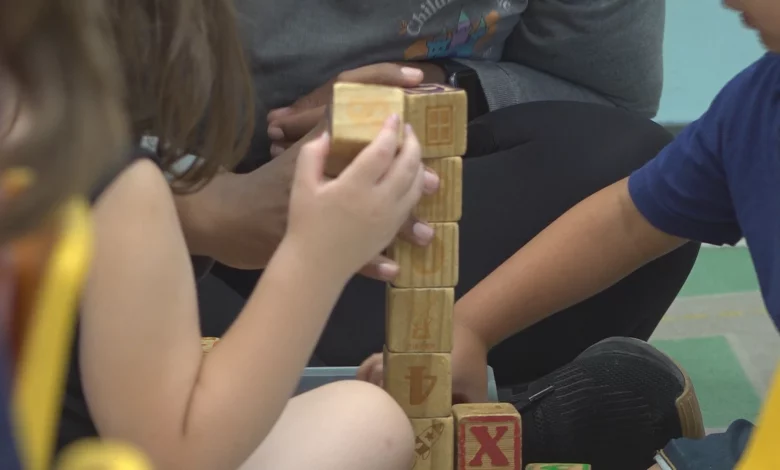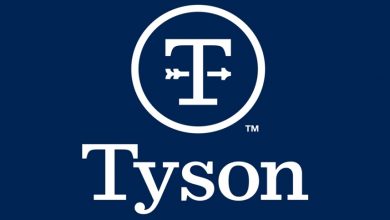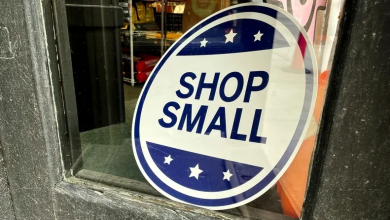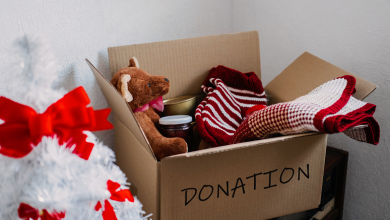Childcare in southwest Virginia unable to meet “astronomical” demand

ROANOKE, Va. – The child care available in southwest Virginia can’t meet what one provider says is an “astronomical” demand.
“The number one thing we hate saying is, ‘I’m sorry we don’t have a position,’” said Jeanna Williams, the Owner and Executive Director of the Children’s Castle Early Learning Center in Roanoke.
It’s something she had to get used to saying during the height of the Pandemic. It was a time she says that nearly made her walk away from her 18-year-old business.
“It was terrifying, because this is the only job I have ever had since I was 16,” Williams said. “…I don’t think that I have ever seriously thought about giving up my career and choosing a different profession than I thought of it then. I’m glad that I stuck it out because when you ride the waves, eventually the ocean will calm. It does seem to be calming now.”
While it seems to be calming, the waters haven’t stilled completely in this industry.
“I would say, we’re at a critical point,” said Denise Ellis, Director of Early Learning Strategies for the United Way of Roanoke Valley.
“If I didn’t have enough admiration for early childhood educators, childcare providers, family day home providers, that has increased tenfold,” she said. “Because they really have had some difficult challenges through COVID and the pandemic that still continue.”
Chief among them is that providers are struggling to hire people to teach and care for children.
“This past year our advertisement for employment has been over $14,000 that we have spent in advertisement for employment. $14,000. Because we’ve had to run consistent ads,” Williams explained. “…That is the most I have spent on advertising combined in the 18 years that I have been open.”
Williams is constantly getting replies to those ads, she said. But the follow through is where the hiring process breaks down.
“The background checks come back and you go to call them to offer them a position because they’ve came in and dotted all their Is and crossed all their Ts and we never hear back from them,” she said. “And come to find out, a lot of it is a requirement to continue their unemployment they have to actively search for jobs.”
Fewer employees means fewer spots available to the children of parents and guardians looking for childcare.
When asked to rate the accessibility of childcare in the region, Ellis said the marks are poor.
According to the Virginia Early Childhood Foundation, about 2,000 more slots are needed to meet the demand in Ready Region West, a community consisting of the cities of Buena Vista, Covington, Lexington, Martinsville, Roanoke, and Salem; and the counties of Alleghany, Bath, Botetourt, Craig, Franklin, Henry, Highland, Patrick, Roanoke, and Rockbridge. (That estimate comes from 2019 data provided by the Bipartisan Policy Center.) The need for childcare is seen statewide. The Ready Region North Central could do with about 10,000 more childcare slots, according to the Foundation. The lost revenue estimates for that region come to a mind boggling $309 million.
Ellis said she has spoken with families who think they have a job secure but struggle to find a place for their child to be cared for while they work.
“Childcare and available, quality childcare is the backbone of our economy,” she said. “So we have many parents that we get calls from through our coordinated enrollment system here, where they’re looking for care and can’t find it.”
The Virginia Early Childhood foundation estimates more than $66 million dollars in business revenue in Ready Region West have been lost because of inadequate child care. (That number comes from a 2018 report commissioned by ReadyNation /Council for a Strong America)
Ellis has heard from some providers that pregnant mothers are calling ahead to reserve spots for their yet-to-be born children. Williams has received an application from someone who is not yet pregnant, but trying. She’s even been contacted by people who work at other child care facilities in the region that don’t have spaces to care for their own children.
“Our waiting list right now, I think, is out through the first of the year currently,” she said.
Williams said her license could allow her to care for and teach 200 children. But it’s a number she’s uncomfortable with – preferring to hover at a maximum of around 160. She currently has about 157 children on her roster.
During the pandemic, Williams said the state changed guidelines that control the teacher to child ratio, upping the number of children a single staff member could be in charge of. It was meant to ease demand, but Williams said it ended up causing other problems.
“You increase enrollment and you put extra stress on teachers because that creates a little bit more of a chaotic classroom. And you end up having essentially more turnover,” she explained. “So in a way where the state was trying to help with the issue of the daycares being so full, it created it was just kind of a, I hate to say that, you know, they didn’t shoot themselves in the foot but it just didn’t, it didn’t really pan out and it didn’t help unfortunately.”
Then there’s the cost of childcare. Ellis said, on average, it will cost a family $125 to $200 per week for a child’s care.
“And you think about a family who is making even $15, $16, $17 an hour and paying out sometimes more in childcare than they do for a car payment or rent,” she said.
The state has made changes that Ellis said could benefit families searching for care, changing guidelines that increased the income requirement for subsidized care per family.
Parents with children aged 5 or younger, not yet in kindergarten, are eligible for assistance if their household income exceeds income eligibility requirements for their locality but is 85 percent of the state median income. The parents have to be employed, looking for a job or participating in an education or training program.
“So we’re hopeful that those changes will open up those accessible funds for more families,” Ellis said, while acknowledging it still doesn’t help fix the underlying issue, meaning some subsidy dollars are going unused.
“It’s not that the providers aren’t willing to participate in these supports for families but the spots just aren’t accessible right now,” she said.
And that, Williams said, concerns her. According to the United Way, 85 percent of brain development happens before age five. Williams said early childhood education can help parents identify developmental challenges or delays.
“Not being able to get into programs like this prevents parents from even being aware that that support is even out there to help them with their children,” she said.
William said the “pandemic babies” in particular, saw a decrease in the Pre-K PALS test scores that assess their readiness for kindergarten. The Virginia Early Childhood Foundation reported about 40 percent of children started kindergarten without key skills in the fall of 2021, according to date from the Virginia Department of Education.
Support is available, however, for providers in addition to families. She said money from the American Rescue Plan Act provides small businesses bonus funds. The United Way’s Smart2Start program expanded during the pandemic to act as a one-stop-shop for parents looking to apply for care for their little ones.
The United Way also has access to a grant from the Virginia Early Childhood Foundation to support the state’s Ready Regions. The Foundation said the pandemic shined a bright light into the importance of early childhood education and care. Ready Region West is getting $1 million to “bring unprecedented levels of coordination, accountability, and family engagement to early education programs in every community in the Commonwealth.” Among the goals for the year ahead, the partnership is aiming to increase access, strengthen quality and confront racial inequities.
This comes after a piece of 2020 legislation that, in 2021, moved licensure oversight of early childhood education and care centers from the Virginia Department of Social Services to the Virginia Department of Education.
Ellis said they are already making strides in bringing facilities up to speed with VQB5 – the new Virginia Quality Birth to Five System. This system is intended to set shared expectations for measuring quality and support teachers in birth to five programs. According to VDOE, it will measure the quality of infant, toddler and preschool teaching and learning based on interactions between teachers and children and their curriculum.
The 2021-2022 school year served as a practice year for this new system, functioning in about 85 percent of the state. This coming school year, the Ready Regions are aiming for 100 percent participation. By fall of 2023, the Foundation says all publicly-funded programs will be required to participate in VQB5, which will share ratings publicly in fall 2024. This is meant to help providers get feedback and support as well as improve data collection and reporting.
The Ready Regions are also seeking innovative ways to improve public-private partnerships.
“We also are aware in some of the other United Ways across the state that there are growing partnerships that tie grant funds with private business,” Ellis explained. “So there are large employers that are supporting child care slots and are really coming into partnership with childcare. If you’re a large business and you need employees, it’s a great way to ensure that the employees you have have some accessible childcare.”
Williams said the support she has received from agencies, like Virginia Quality, has been a huge help. But while demand persists, she said she and others are trying to do the best they can with what they have.
“We as owners and directors are brainstorming as much as we possibly can to try to figure out other ways without, you know, expanding our buildings or opening up other centers,” she explained, “because unfortunately it’s just something that can’t be done overnight.”
“We’re never going to be able to pay childcare providers what they’re worth,” said Ellis. “They’re taking care of our most fragile, you know, most vulnerable humans.”
Ellis said the Ready Regions are poised to make as much of a difference as they can, while hoping more people at the state level recognize the role quality early childhood education and care plays in our communities and that incentives for participating centers increase.
“So continued things like that that come from the state down through the Department of Education and the Virginia Early Childhood Foundation that we can put directly into the hands of child care providers is really gonna be key I think to be able to sustain and grow out what they need.”




